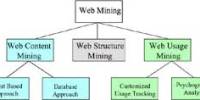Socialization:
Organizational socialization is the process through which organizational culture is perpetuated; by which newcomers learn the appropriate roles and behaviors to become effective and participating members.
Despite the large amount of research on organizational socialization, considerably less attention has been given to the socialization content and its use in evaluating the success of the socialization process, raising four research questions:
1. What information is transmitted during organizational socialization (socialization content?
2. How the information is transmitted (socialization tactics).
3. How do you evaluate whether the information was acquired successfully by the newcomers and/or transmitted successfully by the organization (socialization effectiveness.
4. What is the relationship between effective socialization and behavioral and attitudinal outcomes? The first and second research questions are addressed in relation to the third research question – socialization effectiveness – which is the main focus of this study.
Functioning Within the Work Group. When employees join the organization, they need to learn and understand the way things are done within their work units/groups that is consistent with that of other relevant employees. Indicators of successful functioning within the work group include getting along with coworkers and superiors, coming to feel liked and trusted by peers, understanding the group norms and values, and making a satisfactory adjustment to group culture As such, learning how to function within the work unit is necessary for effective socialization.
Knowledge and Acceptance of Organization’s Culture. Knowledge reflects employees’ understanding of the organization’s culture. Acceptance relates to how fully the employees have internalized the culture of the organization. Every new employee has to be familiar with the organizational culture. The adjustment to organizational norms and values is beneficial when it leads to the internalization of pivotal norms and development of a new self-identity learning the culture enables newcomers to develop a definition of the situation, and a scheme for interpreting everyday events
Personal Learning. This entails the newcomer learning about himself or herself). Personal learning has been identified as an important component of the socialization process emphasized the importance of personal learning to new college graduates college graduates enter the work place with personal doubts about their competence in job performance and ability to cope with the anxieties and tensions of the work world. As such, the newcomer needs to learn the type of person he or she is and how he or she will function within the organization.
Adapting Models:
We define adaptation as the process through which persons in cross-cultural interactions change their communicative behavior to facilitate understanding. Put another way, intercultural adaptation refers to the adjustment of communicative behavior to decrease the probability of being misunderstood when speaking with someone from a different culture. For our purposes, understanding occurs when individuals can interpret messages such that the communicative goals of interact ants are attained. We assume that the process of intercultural adaptation is goal driven.
The model explains how persons may fail to adapt effectively during cross-cultural interactions. The IAM argues that positive and negative experiences with intercultural adaptation influence the success or failure of current adaptive efforts. In particular, the model explains how during initial interactions adaptive strategies are a function of experience and how experience then either facilitates or hinders communication clarity. Finally, the model shows how increased cultural differences are likely to result in miscommunication and, thus, in misunderstanding. For this reason, the more cultural differences that exist between interact ants, the more likely adaptation is to occur. In situations when either cultural differences are perceived prior to the interaction or misunderstandings are manifested during the conversation, experience plays a central role in the adaptive process. Positive experiences are likely to result in effective adaptation, and negative experiences are likely to result in ineffective adaptation or withdrawal from the interaction.
Key reason for using this model:
Many people go to different countries. Some of them go for school, some others go for business and some others go for living. However, some people adapt well to a new environment and others retain their original culture identity. I think adapting to a new culture or environment depends on three main reasons: background culture, where they stay, and their personality.
The first reason is the background culture of people. There are many people who don’t like their own culture or environment. They try to run away or change their culture. Therefore, it would be easier for those people to adapt to a new culture or environment. For example, many Russian people especially businessmen don’t like the business system in their country. Their system is Communism, which means that the government controls all the production and distribution of goods. Therefore, when many Russian people go to a new environment or new culture, the United States for instance, they find it better than their country because it has a different system. The United States’ system is Capitalism, which means that any person can be a private ownership. Therefore, it may be easier for those people to adapt a new culture or a new environment.
China:
Confucianism is a system of behaviors and ethics that stress the obligations of people towards one another based upon their relationship. The basic tenets are based upon five different relationships:
- Ruler and subject
- Husband and wife
- Parents and children
- Brothers and sisters
- Friend and friend
Confucianism stresses duty, sincerity, loyalty, honor, filial piety, respect for age and seniority. Through maintain harmonious relations as individuals, society itself become stable.
- The Chinese don’t like doing business with companies they don’t know, so working through an intermediary is crucial. This could be an individual or an organization who can make a formal introduction and vouch for the reliability of your company.
- Before arriving in China send materials (written in Chinese) that describe your company, its history, and literature about your products and services. The Chinese often use intermediaries to ask questions that they would prefer not to make directly.
- Business relationships are built formally after the Chinese get to know you.
- Be very patient. It takes a considerable amount of time and is bound up with enormous bureaucracy.
- The Chinese see foreigners as representatives of their company rather than as individuals.
- Rank is extremely important in business relationships and you must keep rank differences in mind when communicating.
- Gender bias is nonexistent in business.
- Never lose sight of the fact that communication is official, especially in dealing with someone of higher rank. Treating them too informally, especially in front of their peers, may well ruin a potential deal.
- The Chinese prefer face-to-face meetings rather than written or telephonic communication.
- Meals and social events are not the place for business discussions. There is a demarcation between business and socializing in China, so try to be careful not to intertwine the two.
UK:
Power Distance:
the extent to which the less powerful expect and accept that power is distributed unequally.
Low Power Distance: Boss should be resourceful democrat – Hierarchy in organizations seen as exploitive
High Power Distance: Boss should be benevolent autocrat – Hierarchy in organizations reflects natural differences
UK ranked 30 of 39 – Low Power Distance
Again, lots of similarity between the US, the UK, the Italians, the Dutch and the Germans – although I find it interesting that UK bosses were expected to be most “democratic”. This is also an area where there is one of the biggest separations with France – as that Country is in the company of most Asians and Latin Americans on this criterion. And consider Mexico’s position once more.
Uncertainty Avoidance:
The extent to which people feel threatened by ambiguous circumstances and have created beliefs and institutions to avoid such conditions.
High Uncertainty Avoidance: Many rules & low tolerance of deviant ideas; resistance to change
Low Uncertainty Avoidance: Few rules & high tolerance of deviant and innovative ideas
USA ranked 31 of 39 – Low Uncertainty Avoidance
UK ranked 34 of 39 – Low Uncertainty Avoidance
Germany ranked 20 of 39 – Moderate Uncertainty Avoidance
France ranked 6 of 39 – High Uncertainty Avoidance
Italy ranked 16 of 39 – Moderate Uncertainty Avoidance
Netherlands ranked 25 of 39 – Moderate Uncertainty Avoidance
Mexico ranked 11 of 39 – Moderate Uncertainty Avoidance
Here, the famous US/UK “special relationship” comes to the fore – the people of neither Country like rules being applied to them, so it is not surprising they like each other. Yet the French want to really know where things stand, whilst other European countries seem to be in the middle.
Individualism vs Collectivism
In individualist cultures, individual uniqueness, self-determination is valued. A person is all the more admirable if they are a “self-made man” or “makes up their own mind” or show initiative or work well independently. Collectivist cultures expect people to identify with and work well in groups which protect them in exchange for loyalty and compliance.
Paradoxically, individualist cultures tend to believe that there are universal values that should be shared by all, while collectivist cultures tend to accept that different groups have different values.
Many of the asian cultures are collectivist, while anglo cultures tend to be individualist.
Implications
- A market research firm conducted a survey of tourist agencies around the world. The questionnaires came back from most countries in less than a month. But the agencies in the asian countries took months to do it. After many telexes, it was finally done. The reason was that, for example, American tourist agencies assigned the work to one person, while the Filipinos delegated the work to the entire department, which took longer. The researchers also noticed that the telexes from the Philippines always came from a different person.
International manger:
Global competition has forced businesses to change how they manage at home and abroad. The increasing rate of change, technological advances, shorter product life cycles, and high-speed communications are all factors that contribute to these changes. The new management approach focuses on establishing a new communication system that features a high level of employee involvement. Organizational structures must also be flexible enough to change with changing market conditions. Ongoing staff development programs and design-control procedures, which are understandable and acceptable, are outcomes from this new approach. Management values are changing, and managers must now have a vision and be able to communicate the vision to everyone in the firm.
Although the international manager performs the same basic functions as the domestic manager, he must adjust to more variables and environments. Therefore, each of the five basic management functions must change when operating in a foreign market.
Manager Competencies:
It’s a whole new world of work, and interpersonal skills are key. Organizational change, diversity and electronic communications have changed the face of the workplace. Today, more than ever, success depends upon the combined cooperation, commitment and action of people—both face-to-face and across electronic and cyber channels.
- Solve problems by clarifying the real issues and roadblocks
- Minimize conflict and build group commitment
- Influence others and motivate them to profitable action through interpersonal skills
- Give criticism when necessary and praise to produce results
- Make trade-offs without being a pushover on big issues
- Implement plans without strong-arm tactics
- Develop credibility based on respect and trust
Team building:
Team building is the workplace success factor that relies on the interdependence of each team member to ensure the team’s overall performance is meeting or exceeding its goals. A team is an integral unit, working toward organizational objectives and goals, rather than an aggregate of individuals working on independent goals. When you combine people into teams, the results can be highly unpredictable. Even teams with great people and great skills can be unsuccessful.
International manager team building solutions provide insight into team dynamics based on the core characteristics of each team member. We can help you predict how the team will function and provide management advice on how best to manage the team.
Manager Employee communication:
A manager can significantly impact workforce development and employee performance. Whether the impact is positive or negative is often the direct result of communication management and their understanding of each other’s work habits and style.
Managers who are “out of touch” with their employees often cause low productivity, dwindling morale and high employee turnover. On the other hand, employees who feel a connection to their manager are often highly productive and engaged in their work. Having a greater understanding of the dynamics of their work relationship will help both parties appreciate where their perspectives are similar and where they differ. This mutual understanding will result in a more productive and positive working relationship
In this litigious age, many employers are naturally reluctant to interfere with employee conflict. However, since employee quarrels can often entangle and polarize entire groups and lead to low morale, destruction of company culture, and productivity loss — among other undesired collateral damage — it is imperative that a leader take control of these types of situations at once.
Mark Twain said, “Always acknowledge a fault frankly. This will throw those in authority off their guard and give you opportunity to commit more.” Too bad more employees have not learned to confess when they are at fault. There is no doubt that most conflicts would resolve themselves if this were the case, but since the opposite is true, we need to educate ourselves and implement best practices to be followed when the time calls for it.
It is literally impossible to convey all the likely reasons why conflict arises in the workplace, but below are a few of the most common. Familiarity with the reasons behind the discord assists us in guiding others towards a resolution.
Different values–
Since we all embrace a set of beliefs or principles we hold as true, when we discuss an issue with someone who has incompatible views, there is a high potential for friction and conflict. Being emotional creatures, when faced with these types of situations, we often let our feelings guide our reactions, rather than letting our intellect help us respond in a more cognizant way. Reactions are the words that literally spill out of one’s mouth and are often regretted; responses are the words that evolve after careful consideration and thought processing.
Need for power and control–
Conflict often pushes its way into the workplace when one or more people try to make others change their mind, vote a certain way, or do other things contrary to their beliefs. Some people feel that they must always come out on top in order to prove their superiority, while others have a difficult time fulfilling the role of follower. This power struggle is sometimes noticeable but quite often it works its way into the meeting room like an invisible rip current. It eventually becomes a swift killer of morale and productivity as minds and souls quickly drown and revert to their “I-just-work-here” mode.
Employees bullying their way through work–
Unfortunately, the bullies we grew up with are now in the workplace and still vying for control. Dr Gary Namie, co-founder and president of the Workplace Bullying and Trauma Institute, conducted an online survey of 1,000 people who claimed to have been bullied at work. He found that, of these victims, 37% were fired, and 33% quit their jobs. In a reversal of the typical childhood bullying scenario, in which unpopular kids are picked on most, adult victims in the workplace tend to be capable and charismatic people. The bully sees them as a threat, and strives to get them out of the picture. Most workplace bullies are thought to be women-58% according to those Namie surveyed, and so are their targets-80% of those surveyed. It is estimated that half the adult population will experience severe conflict at least once in their working life. However, many managers and leaders don’t expect conflict and are not prepared to deal with it when it intrudes.
There are five basic steps an employer can take to resolve dissonance in the workplace within safe legal territory.
Acknowledge the conflict–
This seems obvious at first glance, but more often than not, the employer or HR manager may sense the tension in the office or shop, but with so many fires to put out, they usually hope that the dispute simply fizzles out. Inaction is likely one of the worse and costlier choices.
Meet, Share and Agree–
Meet with the parties involved and have them list situations in which they must work together. Ask both parties to carefully listen to what the other says and repeat it in their own words to make sure both sides are communicating and understanding each other. This can take time, but it defines the issue and builds the foundation for resolving it. Legendary communicator, Dale Carnegie, said “Seek first to understand and then to be understood.” That is the foundation of step number two. Get agreements on the type of behaviors employees will exhibit in order to get their tasks accomplished. Behind closed doors, let both parties agree in the process and also emphatically let them know what’s at stake: no one wants to be perceived as a trouble maker or as difficult to handle. To some extent, expectation defines the result. If you indicate, by your actions, content, or voice tone, that you expect less than full adult behavior, that’s what you are likely to get. Remind them that words, even idle chitchat, have meaning and consequences.
Create an issue resolution process–
This fundamental tool for reducing wasted time spent on what is often frivolous quarreling should be incorporated into your employee handbook. Several templates to accomplish this task are available through SHRM and other online resources. Giving appropriate praise to employees willing to navigate this process within a positive frame of mind will divert the attention they get as either the victim or perpetrator. At Delta Faucet, in Jackson, Tenn., it is understood that team leaders should not be involved in refereeing disagreements on the team because it takes time away from important tasks. Instead, employees are trained in conflict management and required to follow a specific course of action when conflicts arise. Perhaps not all companies have the time to invest in this kind of training, but having a process in place is an acceptable runner up to achieve the desired result.
Focus on behaviors, not personalities–
This is a crucial tool that helps others understand that their entire person is not coming under scrutiny and that the challenge at hand is solely based on one or more particular behaviors instead. By understanding this concept employees walk out of meetings feeling engaged instead of defeated.
Strike an open-door policy balance–
Encourage accountability and growth and let employees know that open door does not mean “open dumping ground.” But also remind them that you are available to coach them on how to work through specific situations. This will give them a sense that they truly are your most valuable asset and will ignite a desire to self-arbitrate future challenges.
It’s been said that conflict is inevitable and resentment is optional. Protecting your business begins with creating a culture that understands this and values conflict management. In addition to including conflict-resolution action steps in your employee handbook, be sure to clearly communicate that management or HR must always be notified of and involved in certain types of conflicts. Particularly those in which there are indications of physical violence, harassment, theft, or illegal substance use.
Conflict is not always the evil it is made to be. In fact, when teams learn to capitalize from this friction is when groups take positive action, reexamine decisions, and ground-breaking ideas are born. A good fire is impossible without friction; it is up to you and your leadership teams to funnel this friction into a catalyst for innovation and productivity.
The key strategy would be of RYH
ORGANIZING
Organizing is the managerial function of arranging people and resources to work toward a goal. The purposes of organizing include but are not limited to determining the tasks to be performed in order to achieve objectives, dividing tasks into specific jobs, grouping jobs into departments, specifying reporting and authority relationships, delegating the authority necessary for task accomplishment, and allocating and deploying resources in a coordinated fashion.
Organizing plays a central role in the management process. Once plans are created the manager’s task is to see that they are carried out. Given a clear mission, core values, objectives, and strategy, the role of organizing is to begin the process of implementation by clarifying jobs and working relationships. It identifies who is to do what, who is in charge of whom, and how different people and parts of the organization relate to and work with one another. All of this, of course, can be done in different ways. The strategic leadership challenge is to choose the best organizational form to fit the strategy and other situational demands.
ORGANIZING DECISIONS
When organizing, managers must make decisions about the division of labor and work specialization, departmentalization, chain of command, span of management, centralization, and formalization. Collectively, these decisions are often called organizational design.
DIVISION OF LABOR OR SPECIALIZATION.
More than two centuries ago Adam Smith concluded that division of labor contributes to increased productivity and efficiency by allowing workers to specialize and become proficient at a specific task. This principle, coupled with technological advances, made possible the tremendous productivity of industrial companies during most of the twentieth century. Most manufacturing jobs in developed nations were highly specialized, with workers performing specific, standardized, and repetitive tasks. This resulted in reduced staffing, training, and compensation costs, since highly skilled workers were often not necessary. In addition, since employees were doing the same task repetitively, they tended to become very good at it.
Despite the improvements in productivity made possible by the division of labor, managers must be aware of the negative aspects of specialization: fatigue, stress, boredom, low quality products, absenteeism, and turnover. Such problems have led to programs geared toward job enlargement and job enrichment.
DEPARTMENTALIZATION.
After the work to be completed is organized into identifiable jobs through a process of dividing labor, jobs are then combined into logical sections or departments. Doing so allows for effective coordination of effort. There are many ways to departmentalize, each of which has important advantages and disadvantages. One of the most common forms is functional departmentalization, which involves grouping similar jobs into a common department, such as accounting, sales, human resources, and engineering. Another form is product departmentalization, which involves organizing around an enterprise’s various product lines. Other ways of departmentalizing include organizing by customer and by geographic territory. In practice, most large companies use a hybrid form of departmentalization, which means they combine one or more of the above methods to form their organizational structure.
CHAIN OF COMMAND.
The chain of command is a line of authority extending from the top to the bottom of the organizational structure. Classic principles of organizing emphasize that one must be aware of the need to define the extent of managers’ responsibility and authority by specifying their place in the chain of command. Another principle of organizing related to the chain of command is called the unity of command, which states that a person should have only one superior to whom he or she must report.
SPAN OF MANAGEMENT.
The span of management, often called the span of control, is the number of individuals who are directly responsible to a particular manager. A classic principle of organizing suggests that there are definite limits to the number of subordinates one manager can supervise effectively. When organizing, managers must keep these limits in mind. Wide spans of management lead to flatter organizational structures with fewer layers of management, and are thus considered more efficient. However, if spans become too wide managers may not be able to provide adequate direction to subordinates. Narrow spans of management lead to tall organizational structures with many layers of management. Although narrower spans of management allow for closer supervision of subordinates they have many drawbacks, including cost, communication problems, and difficulty in developing the initiative and autonomy of subordinates.
In general, the trend is toward wider spans of management, with an accompanying decrease in management hierarchy. Technological advances in information processing and communication have made wider spans of management more feasible.
DEGREE OF CENTRALIZATION.
Another organizing decision is the degree of centralization in the organizational structure. If decision-making authority in an organization is highly centralized, then most major decisions are made at the upper levels of the structure. Conversely, if decision-making authority is decentralized, important decisions are often made at lower levels of the hierarchy. The degree of centralization that is appropriate for a given organization depends upon many factors, including the nature of the environmental conditions that face the enterprise, the characteristics and abilities of lower-level employees, and the size of the enterprise. Many organizations are favoring a greater degree of decentralization of their decision-making authority.
FORMALIZATION.
The degree of formalization in an enterprise refers to the degree to which there are standardized rules and procedures governing the activities of employees. A company with a high degree of formalization is characterized by detailed job descriptions and clearly defined policies and procedures covering a wide variety of employee behaviors. Conversely, a company with a low level of formalization is characterized by non-structured jobs and fewer explicit policies and procedures.
As companies grow larger, a certain amount of formalization is inevitable. Employees require some direction in their job responsibilities and in the procedures required for consistency within the organization’s production schema. When organizing, however, managers should be aware of the costs of excessive formalization, which may include stifling employee creativity and innovation as well as slowing the organization’s responsiveness to critical issues and problems.
Prior to the interview make sure you understand the key elements of the job. Develop a simple outline that covers the job duties. Possibly work with the incumbent or people familiar with the various responsibilities to understand what the job is about. Screen the resumes and applications to gain information for the interview. Standardize and prepare the questions you will ask each applicant.
Identify the knowledge, attributes, and skills the applicant needs for success. If the job requires special education or licensing, be sure to include it on your list. Identify the top seven attributes or competencies the job requires and structure the interview accordingly
The best interview follows a structured process. This doesn’t mean the entire process is inflexible without spontaneity. What it means is, each applicant is asked the same questions and is scored with a consistent rating process. A structured approach helps avoid bias and gives all applicants a fair chance. The best way to accomplish this is by using behavioral based questions and situational questions.
Organizational socialization is the process through which organizational culture is perpetuated; by which newcomers learn the appropriate roles and behaviors to become effective and participating members.
Despite the large amount of research on organizational socialization, considerably less attention has been given to the socialization content and its use in evaluating the success of the socialization process, raising four research questions:
1. What information is transmitted during organizational socialization (socialization content?
2. How the information is transmitted (socialization tactics).
We define adaptation as the process through which persons in cross-cultural interactions change their communicative behavior to facilitate understanding. Put another way, intercultural adaptation refers to the adjustment of communicative behavior to decrease the probability of being misunderstood when speaking with someone from a different culture. For our purposes, understanding occurs when individuals can interpret messages such that the communicative goals of interact ants are attained. We assume that the process of intercultural adaptation is goal driven.
Many people go to different countries. Some of them go for school, some others go for business and some others go for living. However, some people adapt well to a new environment and others retain their original culture identity. I think adapting to a new culture or environment depends on three main reasons: background culture, where they stay, and their personality
In individualist cultures, individual uniqueness, self-determination is valued. A person is all the more admirable if they are a “self-made man” or “makes up their own mind” or show initiative or work well independently. Collectivist cultures expect people to identify with and work well in groups which protect them in exchange for loyalty and compliance.
Global competition has forced businesses to change how they manage at home and abroad. The increasing rate of change, technological advances, shorter product life cycles, and high-speed communications are all factors that contribute to these changes. The new management approach focuses on establishing a new communication system that features a high level of employee involvement. Organizational structures must also be flexible enough to change with changing market conditions. Ongoing staff development programs and design-control procedures, which are understandable and acceptable, are outcomes from this new approach. Management values are changing, and managers must now have a vision and be able to communicate the vision to everyone in the firm
Team building is the workplace success factor that relies on the interdependence of each team member to ensure the team’s overall performance is meeting or exceeding its goals. A team is an integral unit, working toward organizational objectives and goals, rather than an aggregate of individuals working on independent goals. When you combine people into teams, the results can be highly unpredictable. Even teams with great people and great skills can be unsuccessful.
Managers who are “out of touch” with their employees often cause low productivity, dwindling morale and high employee turnover. On the other hand, employees who feel a connection to their manager are often highly productive and engaged in their work. Having a greater understanding of the dynamics of their work relationship will help both parties appreciate where their perspectives are similar and where they differ. This mutual understanding will result in a more productive and positive working relationship
Mark Twain said, “Always acknowledge a fault frankly. This will throw those in authority off their guard and give you opportunity to commit more.” Too bad more employees have not learned to confess when they are at fault. There is no doubt that most conflicts would resolve themselves if this were the case, but since the opposite is true, we need to educate ourselves and implement best practices to be followed when the time calls for it.
Meet with the parties involved and have them list situations in which they must work together. Ask both parties to carefully listen to what the other says and repeat it in their own words to make sure both sides are communicating and understanding each other. This can take time, but it defines the issue and builds the foundation for resolving it. Legendary communicator, Dale Carnegie, said “Seek first to understand and then to be understood.” That is the foundation of step number two. Get agreements on the type of behaviors employees will exhibit in order to get their tasks accomplished. Behind closed doors, let both parties agree in the process and also emphatically let them know what’s at stake: no one wants to be perceived as a trouble maker or as difficult to handle. To some extent, expectation defines the result. If you indicate, by your actions, content, or voice tone, that you expect less than full adult behavior, that’s what you are likely to get. Remind them that words, even idle chitchat, have meaning and consequences
Organizing plays a central role in the management process. Once plans are created the manager’s task is to see that they are carried out. Given a clear mission, core values, objectives, and strategy, the role of organizing is to begin the process of implementation by clarifying jobs and working relationships. It identifies who is to do what, who is in charge of whom, and how different people and parts of the organization relate to and work with one another. All of this, of course, can be done in different ways. The strategic leadership challenge is to choose the best organizational form to fit the strategy and other situational demands
















